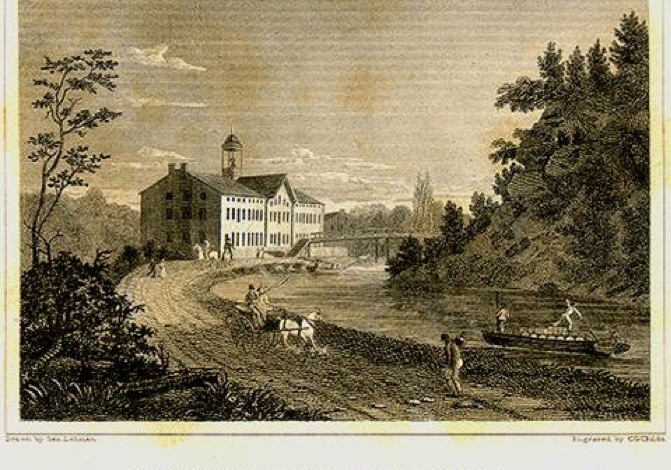HISTORY
Manayunk is rich in our region's cultural history and in industrial archeology.
Excerpt from "Workshop of the World"
The growing textile production in this new mill town along the Schuylkill attracted families of immigrants from the English, Irish, and German textile regions. Already familiar with mechanized textile mills and the accompanying working conditions, this workforce could literally step from the boat to the mill. The Manayunk textile mill owners actively sought the pool of immigrant labor because it offered another commodity they especially desired, that of the unskilled hands found in the women and children. As a bonus to the owners, older boys and men experienced with the mechanics of the spinners, carders, and mules, were available for the choosing. Families crossed the Atlantic specifically for work in Manayunk and its members, often as young as age seven, entered the mill. The new mill town also drew a population of experienced workers from various American textile mills.
Manayunk textile mills, as a part of the textile industry of Philadelphia, differed from other American textile centers, especially Lowell, primarily because they operated under family ownership rather than as corporations.
http://www.workshopoftheworld.com/manayunk/manayunk.html
© Sara Jane Elk, Workshop of the World (Oliver Evans Press, 1990).
RECOMMENDED: Investment in a historical interpretive center or permanent exhibit on Main Street.
Nothing exists today in Manayunk reflecting our history despite the community's requests and the tourism asset this would bring to Manayunk, Philadelphia and the region.
In fact this year Manayunk,
celebrates Its 95th Anniversary
--who would know?
Manayunk, Philadelphia, PA Wikipedia entry:
http://en.wikipedia.org/wiki/Manayunk,_Philadelphia,_Pennsylvania
Philadelphia's Story by John Johnstone:
http://membrane.com/philanet/Philadelphia/
Workshop of the World -- Manayunk by Sara Jane Elk, 1990:
http://www.workshopoftheworld.com/manayunk/manayunk.html
The Gentrification of Manayunk: A Thesis in Historic Preservation, 2006, by Geraldine Fisher:
http://repository.upenn.edu/cgi/viewcontent.cgi?article=1004&context=hp_theses
Milling about: Family Firms and Urban Manufacturing in Textile Philadelphia, 1840-1865
Scranton Journal of Urban History.1984; 10: 259-294
http://juh.sagepub.com/cgi/pdf_extract/10/3/259
From the City Archives, PhillyHistory.org -- pictures of Manayunk:
http://www.phillyhistory.org/PhotoArchive/Search.aspx
From Bryn Mawr via the Free Library, "Schuylkill Canal at Manayunk," 1827-30, by Cephus Grier Childs, "The thriving little village of which our engraving represents one of the most interesting parts, is situated on the banks of the river and of the canal, at the distance of about six miles from Philadelphia. It derives its name from the aboriginal title of the Schuylkill, and owes its origin to the improvements which have been made upon that stream."
http://www.brynmawr.edu/iconog/wildchild/Acmana.jpeg
From Bryn Mawr's Special Collections, "Manayunk, Near Philadelphia," 1838, by John Caspar Wild, "This is a beautiful village, about seven miles up the Schuylkill, from the city. One of the most delightful drives, with which the country abounds, is along the banks of the beautiful Schuylkill to Manayunk."
http://www.brynmawr.edu/iconog/wildchild/Awmanayunk.jpg
From the Library Company, Prints and Photographs of Manayunk:
